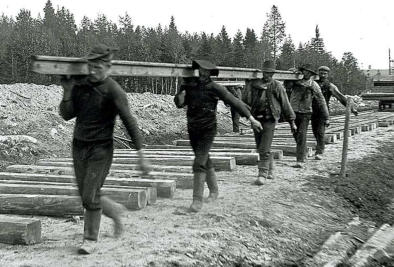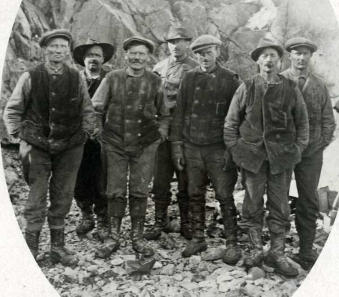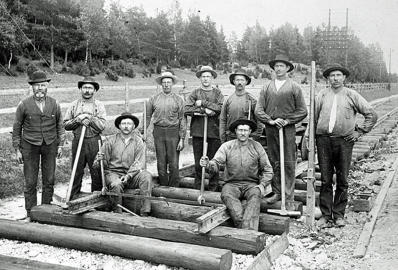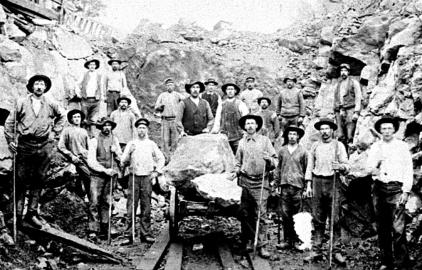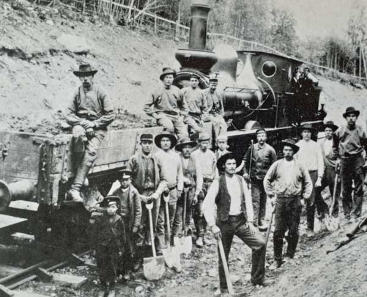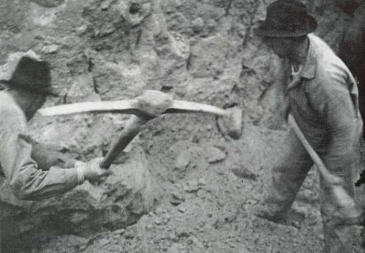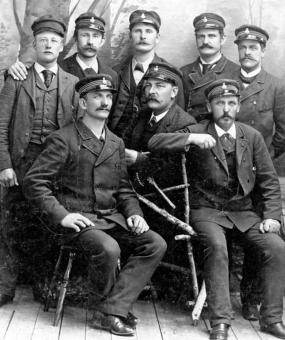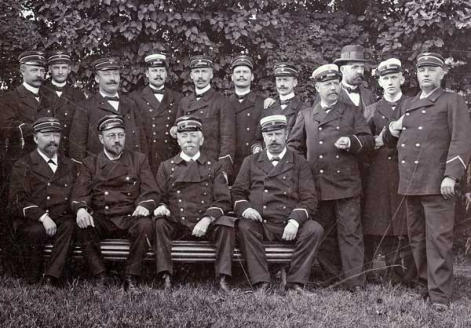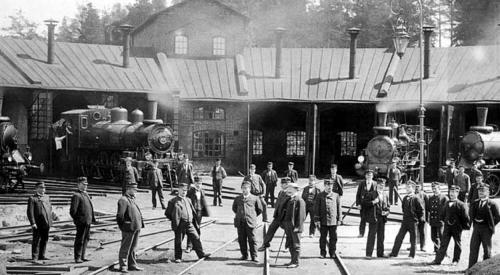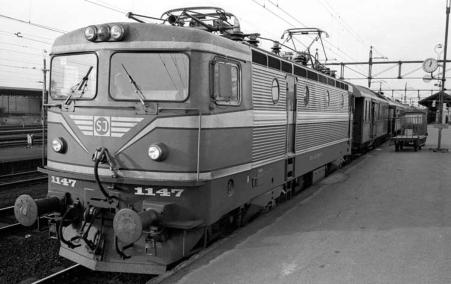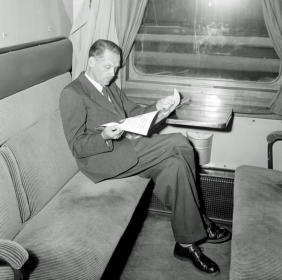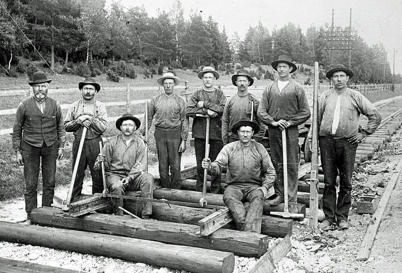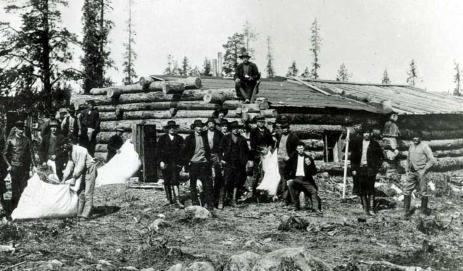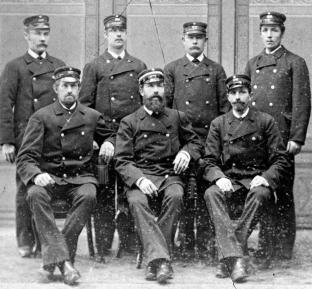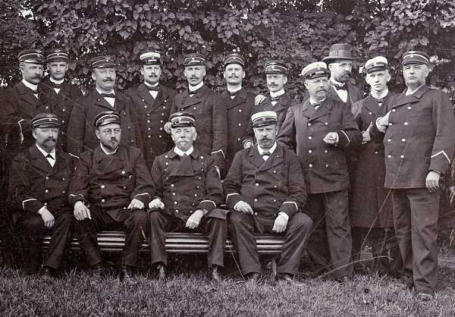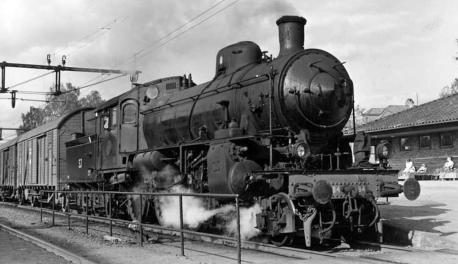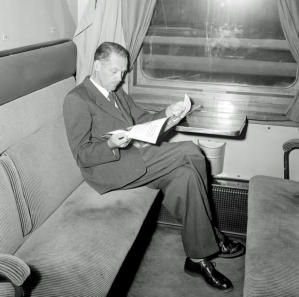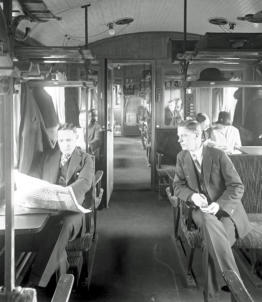
Copyright © Hans Högman 2021-03-18
History of Railways in Sweden (6)
History of Railways in Sweden - Photo
Gallery
Navvies

Related Links
•
Railway History, part-1
•
Railway History, part-2
•
Railway Occupations and Uniforms
•
Swedish State Railways - Locomotives
•
Iron Ore Line
•
Maps of the Swedish Railway System
•
History of Swedish Log Driving
Source References
•
Staten, järnvägarna och den regionala
utvecklingen i Sverige 1840–1890, Agaton Sten,
2015, Umeå Universitet.
•
Den glade rallaren? Norrbottniska rallares syn på
sina arbets- och levnadsvillkor, Per-Jonas Pihl
2016, Luleå Tekniska Universitet.
•
Boken “En rallares levnadsminnen”, av Samuel
Magnusson Svanbäck; nedtecknade av Herbert
Malmback, 1931.
•
Boken: “Banbrytare. Äventyr och upplevelser under
ett 100-årigt järnvägsbyggande i Sverige”. Manne
Briandt. Kristianstad 1959.
•
Sveriges järnvägars historia, Populär Historia, 13
september 2006 av Niklas Ingmarsson,
publicerad i Populär Historia 7-8/2006 .
•
Rallarna i Sverige banade väg för industrialismen,
av Mats Utbult, publicerad i Populär historia
11/2009.
•
Wikipedia
•
Järnvägsmuseet (Railway Museum in Gävle,
Sweden)
Top of page
Navvies laying rails on the Northern Main Line in
1912. Image: Nordiska museet.
Navvies wearing waistcoats (vests). Ekström’s navvy
team on the Inland Line by Gunnarn in 1928,
Lycksele - Storuman section. Image:
Järnvägsmuseet, ID: JvmKDAK03403.
Navvies - construction of double tracks between
Stockholm and Uppsala, by Alsike in 1900. Image:
Nordiska Museet, ID: NMA.0036614.
Navvies, railway construction for the Bergslagen
Railway, by Lilla Edet circa 1905. Image:
Västergötlands museum, ID: 1M16-A145233:3863.
Navvies, tunnel
construction of the
Nuolja tunnel on the
Iron Ore Line, North
Sweden, May 1902. The
tunnel is 875 meters
long.
A navvy camp for the Iron Ore Line by Riksgränen,
North Sweden, around 1900. Image: Järnvägsmuseet,
ID: JvmKDAF00161.
Navvies with wheelbarrows.
Navvies and a working train, removing earth in Semla,
Västmanland, in 1900. Photo: Nordiska museet.
Navvies removing earth with a so-called grand-barrow
by Bodasjön Lake, Vetlanda, 1913. The navvy in the
middle wearing a slouch hat is Martin Palm. Photo:
Bäckseda hembygdsförening, ID: bseda.00141.
Railway construction, navvies with a pickax
and a sledgehammer.
SJ Railway Staff in Uniform
SJ-staff at Ockelbo railway station: trackmen and a
trackmaster, circa 1880-1900. Image: Järnvägsmuseet,
ID: JvmKDAK03083.
Station porters circa 1895. Seated in the middle is a
Head porter. The porters are wearing cap numbers on
their caps. Image: Järnvägsmuseet, ID: JvmKABA00165.
Engine drivers and locomotive firemen, 1890s,
Stockholm. Image: Järnvägsmuseet, ID:
JvmKDAK03216.
Stationmasters attending a meeting in Hessleholm,
September 1899. Image: Järnvägsmuseet, ID:
JvmKDCA00655.
Locomotives
Engine shed in Katrineholm circa 1905. Image:
Järnvägsmuseet.
SJ B-class steam locomotive. Photo: S. Walhter, 1950.
Image: Järnvägsmuseet, ID: JvmKDAF04841.
An engine driver in the cab of an E-class steam
locomotive, 1960s. Photo: Sven Thelberg. Image:
Järnvägsmuseet, ID: JvmKBDO00130.
Fireman in a steam locomotive, 1956. Photo: Lennart
Nilsson. Image: Järnvägsmuseet, ID: JvmKBDB15546.
SJ D-class electric locomotive at Vislanda station,
1954. Photo: Birger Ferm. Image: Järnvägsmuseet, ID:
JvmKAFF00293.
SJ Rc-class electric locomotive, SJ Rc4 1147, in 1976.
Image: Järnvägsmuseet, ID: JvmKBDB14784:01.
Railway Carriages
The interior of a Swedish restaurant carriage at the
beginning of the 1900s. Image: Järnvägsmuseet, ID:
JvmKBDM02331
SJ second-class railway compartment, 1930s.
Image: Järnvägsmuseet, ID: JvmKDAF04728.
SJ two-bed sleeping-compartment in 1954. Photo:
Seved Walther. Image: Järnvägsmuseet, ID:
JvmKBDB03144.
SJ railway compartment, second-class, in 1953.
Photo: Seved Walther. Image: Järnvägsmuseet, ID:
JvmKBDB03060.
SJ C08a railway carriage, third-class, 1920s. Image:
Järnvägsmuseet, ID: JvmKBDB04780.





























































































































































































































































































































































































